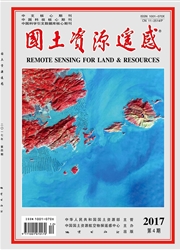

 中文摘要:
中文摘要:
以北京市为例,选取了商业区、学校、生活区和公园4种典型小区24个,基于遥感及GIS的方法反演地表温度,获取下垫面覆盖信息;研究了不同类型小区地表温度热场与下垫面结构的关系。结果表明:水体、绿地具有明显的降温功能,建筑地面则增温效果明显,这3种地表所占的面积比例与小区平均地表温度关系密切;在所选取的绿地结构指数中,对温度影响从大到小依次为绿地覆盖率、分离度、缀块平均面积、连通指数、形状指数和分维数,其中,分离度与温度呈现正相关,其它指数与温度呈负相关;在所有类型小区中,温度从高到低依次为商业区、学校、生活区和公园;公园的温度分布在所有类型小区中最分散,商业区最集中。
 英文摘要:
英文摘要:
24 plots composed of commercial districts, school areas, residential areas and parks in Beijing were selected to extract land surface temperatures by using remote sensing and GIS method. Land cover types were acquired, and the pattern of ecological green space was evaluated by a landscape software. The authors investigated the relationship between land surface temperatures of various plots and underlying ground structures. The results show that the water region and the ecological green space have the cooling function, while the concrete surface can heat the land surface. The proportions of the above three types strongly affect the average land surface temperature of the explored plots. The effect of selected ecological green space indices on temperature is in decreasing order of ' green space ratio' , ' division' , ' average area of patch' , ' cohesion index' , ' shape index' , and ' fractal dimension'. There is a positive correlation between ' resolution' and temperature, and a negative correlation between temperature and other quantities. Among all kinds of the selected plots, the descending order of their temperatures is from commercial districts through school areas and residential areas to parks. The temperature distributions of parks are extremely scattered, while those of commercial districts are the most concentrated.
 同期刊论文项目
同期刊论文项目
 同项目期刊论文
同项目期刊论文
 期刊信息
期刊信息
